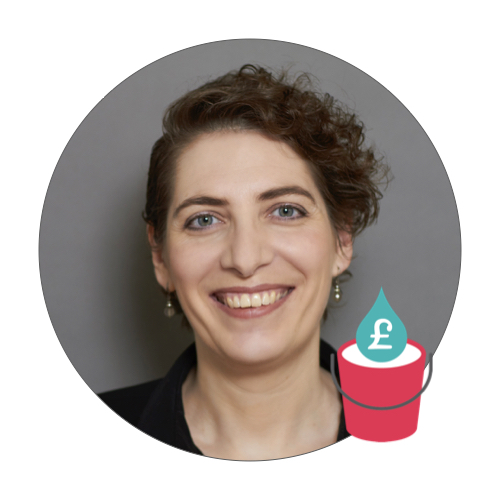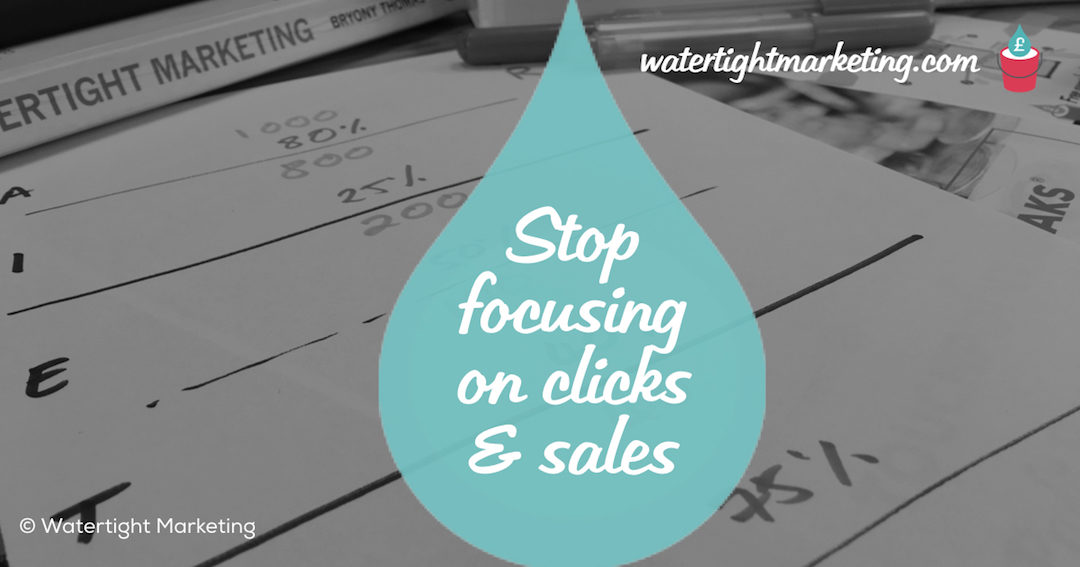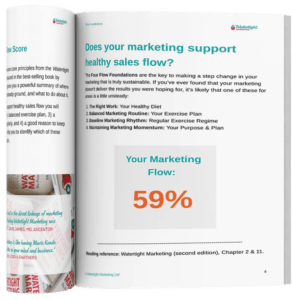What constitutes a marketing outcome? In my last post I looked at how to track volume and movement across a buying decision, today I’m looking at what a real commercial outcome is from all the activity that goes into getting people to walk this path.
This is about finding a way of seeing the full and true financial picture. You’re looking to measure your return on investment (ROI) – this is said with a note of caution, as a blinkered focus on this metric can actually put you on a downward spiral (will blog about this next week!). It’s a deceptively simple ratio. But, what is exactly is your investment, and what truly represents a return. I’d say:
- Your investment: the full cost of securing a new customer
- Your return: the true value of a customer.
How to work out your full marketing investment per customer
(or cost of acquisition)
Start by working out your investment. For this you’ll need to know the cost of customer acquisition and the cost of set-up.
What costs do customers pick up along the way?
Watertight Marketing, the book and the methodology, is premised on understanding that in making a buying decision, people move through a journey. What this means from a financial perspective is that they pick up costs along the way. Where many businesses fall down in terms of the completeness of their understanding of the cost of marketing is by only counting the cost of the initial activity that sourced the potential buyer, rather than the cost of taking them through the whole journey. You need to remember in this that a new customer needs to carry the cost of the people who didn’t buy.
For example, if you sent a direct mail. piece to 200 people, and 4 people eventually signed up, the cost of the full 200 mailings would need to be distributed across those four customers.
Using your Watertight Marketing budget in which you’ve established the proportion of your marketing budget you’ve spent supporting each step, and your conversion rates, you can work out an average cost per step in the process. From this, you can establish the average cost of the marketing activity used to support a sale. You do this by dividing the spend across the whole six-step buying decision by the number of customers secured.
How much does it cost to get a customer up and running with what they’ve bought?
Another potential blind spot in terms of understanding the full cost of securing a new customer is making sensible allowances for how much it costs the business to get the customer set up. For example:
- Adding them to your systems
- Initial set-up meetings or phone calls
- Typical early support calls.
When you add these two costs (acquisition and set-up) together you’ll see the total investment. This is the full cost to secure a new customer for your business. You can do this calculation retrospectively to establish actual costs or use your projected numbers to establish a target costs. This is the I in ROI.
How to work out the short and long-term profitability of a customer
You then need to work out your return. But, measuring return, that is the true value of a customer, is also a nuanced business. At its simplest, you can look at their first purchase and see that as the return. So, if a customer has just signed-up and paid you £100, and it cost you £50 to win their business then your ROI is 2:1. However, this can give a distorted view.
Depending on the complexity of your business, and making allowances for ongoing cost to serve, you might need to take time to understand two further concepts:
- Payback period: how long it takes for you to break even on a customer.
- Lifetime value: how much an average customer is worth to your business over the whole duration of their relationship with you.
If cash flow is critical, it’s speedy payback you’re looking for
Payback is understanding when the customer has covered what you paid out to secure them in the first place. If you look just at the first month, for example, the initial outlay is likely to look completely out of line.
Knowing the full cost to secure a new customer and roughly how much money the new customer will bring in over a given timeframe means that you know how long you need to keep them to break even on the money you’ve spent. It’s only after this point that they start making you a profit.
If cash flow is a critical requirement in your business, speedy payback will be essential. So, if it costs you an average £300 to secure a new customer, and they make you £100 per month, you will hit payback at month three. This is when your business typically starts to make a profit.
———————————-
WORKED EXAMPLE: VA-VOOM!
(VA-Voom! is a wholly fictional company, for whom an end-to-end
marketing strategy is put together over the course of my book, Watertight Marketing)
The 12-month marketing budget for VA-Voom! came in at just over £33,000. When they started their Watertight Marketing transofrmation programme they had 160 contracted clients. The target was to increase this to 225 within 24 months. So, for the year this budget pertained, they were looking to secure 33 new contracted clients. This meant that their target cost of customer acquisition was approximately £1000. They worked out that getting a client set-up on their system cost them about £250 per client. To secure their 33 new loyal customers, they’d need to set- up 44 clients as 25% were forecast to cancel before six weeks. So, covering the costs of the clients who don’t make the transition, the set-up costs are averaged at £333 per client. So, the full cost to secure a new customer for VA-Voom! is £1333.
———————————-
For long-term sustainability, it’s lifetime value that you’re looking for
Lifetime value is how much you will make from a customer for the whole time that they remain a customer of yours. This is what they are really worth to your business. Understanding this may mean that you are willing to spend more on acquiring a customer in the first place, forgoing speed of profitability in return for ongoing revenue and long-term sustainability.
Let’s imagine that the average customer above on whom you make £100 per month typically stays with your business for three years. This means that they’re actually worth £3600 to your business (£100 x 12mths x 3yrs = £3600). Armed with this information you might decide to invest more heavily in high quality marketing to secure more of this kind of customer.
———————————-
WORKED EXAMPLE: VA-VOOM!
The target average monthly spend for the contracted customers was £350, equivalent to 8 hours at £42. With ongoing costs to serve of roughly £20 per hour, £160 per month, the monthly profit for VA-Voom! stands at £190 per month. By dividing the full cost to secure a customer (£1333) by the monthly return they achieve (£190) they worked out that it would take just over seven months to reach payback on a new Loyal customer.
———————————-
When you’ve worked out the four key items above you can set clear financial marketing objectives, to include:
- The average cost of customer acquisition.
- The payback period on the marketing spend.
- The average lifetime value of the customers secured.
And, if you have a head of marketing, these are the metrics I’d be using to measure and reward them. Not traffic. Not clicks. Not open rates. Not even sales. But, these clear commercial metrics that underpin the long-term success of your business.
A fully worked example and comprehensive worksheets to guide you step-by-step through creating a robust measurement framework for your business is available for FREE when you register your copy of Watertight Marketing.
© Bryony Thomas – The Watertight Marketer

Bryony Thomas
Author & Founder, Watertight Marketing
Bryony Thomas is the creator of the multi-award winning Watertight Marketing methodology, captured in her best-selling book of the same name. She is one of the UK's foremost marketing thinkers, featured by the likes of Forbes, The Guardian, Business Insider and many more, and in-demand speaker for business conferences, in-house sales days and high-level Board strategy days.



Trackbacks/Pingbacks